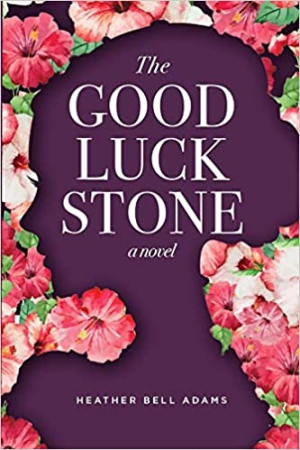The Good Luck Stone
In Heather Bell Adams’s novel The Good Luck Stone, wartime memories haunt a ninety-year-old woman, who also struggles to maintain her personal independence.
During World War II, Audrey ventured beyond her genteel Southern upbringing to volunteer as a combat nurse in the Philippines. While in training, Audrey became close friends with two fellow recruits, Kat and Penny. At first, the young women spent off-duty hours at the beach or dancing with soldiers; they wore similar jade brooches as expressions of sisterhood, noting the green stone’s reputation for luck, healing, and protection.
But beyond the trauma of treating injured men, Audrey and the other nurses soon endured near starvation, bombings by Japanese forces, and eventual enemy occupation. Audrey’s idealism upon arriving at Manila’s military hospital is contrasted with these grim nightmares.
For decades, Audrey tries to suppress her wartime experiences, including a romance with an army doctor, Kat’s death, and her anguished choice to return to the US, leaving Penny in the hellish South Pacific. Now a respected resident of Savannah, Audrey has cultivated a calm persona. The novel links her past and present with surety. In the present, Audrey is monitored for signs of mental and physical deterioration by her overbearing granddaughter, and she fights to maintain her dignity while managing her various health conditions.
When Audrey learns that Penny is dying, she drives to North Carolina to visit her. After years of silence, Audrey is compelled to reunite and explain why she had to leave Manila before the war ended. Along the way, though, Audrey becomes disoriented and neglects to take her medications. Her vulnerability and desperate need to get back on course are poignant and unnerving.
The Good Luck Stone is a riveting and intimate novel about singular friendships, courage, sacrifice, and the remarkable lives of the Greatest Generation.
Reviewed by
Meg Nola
Disclosure: This article is not an endorsement, but a review. The publisher of this book provided free copies of the book to have their book reviewed by a professional reviewer. No fee was paid by the publisher for this review. Foreword Reviews only recommends books that we love. Foreword Magazine, Inc. is disclosing this in accordance with the Federal Trade Commission’s 16 CFR, Part 255.

